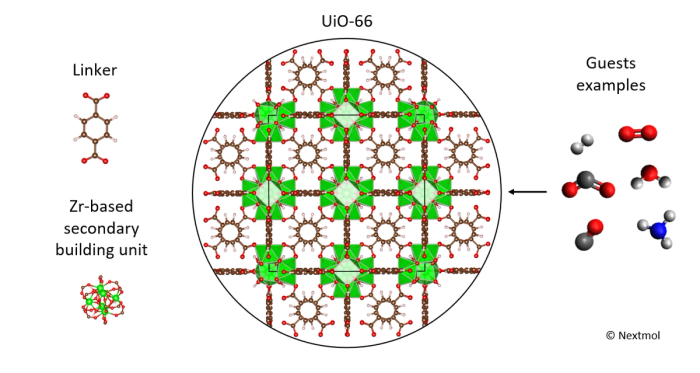Metal-organic frameworks (MOFs) are a fascinating class of hybrid porous solids made from the self-assembly of inorganic centres and organic linkers. Due to their reticular nature, MOFs offer a wide range of possibilities for the design of new materials with tailored chemistries and properties. These materials have already demonstrated a versatile potential for applications including gas sorption and separation, catalysis, drug delivery, and water harvesting.
Nowadays, as databases of hundreds of thousands of synthesized and hypothetical MOF structures have been made available, the identification of MOFs with specific properties for a targeted application is bound to heavily rely on computational approaches. For example, simulation techniques have been successfully applied to investigate a broad range of challenges including hydrogen adsorption and purification from syngas (H2/CO), the abatement of air pollution (from volatile organic compounds, NOx, SOx, etc.), the capture of toxic industrial chemicals like ammonia in humid conditions, the capture and separation of CO2 from flue gas (CO2/N2) and landfill gas (CO2/CH4) for the mitigation of CO2 emissions.

In typical sorption or separation studies, high-throughput Monte Carlo simulations permit to identify the MOF with the highest affinities for the guest molecules of interest and to estimate the maximal guest loadings. Subsets of the CoRE MOF database, which stands for Computation-Ready Experimental MOF, are often used as initial pool of MOF structures.
Afterwards, if one is interested in investigating different types of properties, such as the chemical stability of the material when adsorbing corrosive guests like NH3 or H2O, or the potential of some MOF as catalytic platforms, density functional theory (DFT) calculations can be performed. Such calculations provide in-depth insights into the host-guest coordination or into the underlying reaction mechanisms of the catalytic processes, but their cost is significantly higher. Therefore, they are usually only performed on a case-by-case basis once the best adsorbents have been identified.
Finally, it is worth mentioning that in recent years a series of machine learning approaches have been successfully developed to accelerate the discovery of new MOFs.
Contact us to explore how can we help in the development of MOFs tailored to your needs.